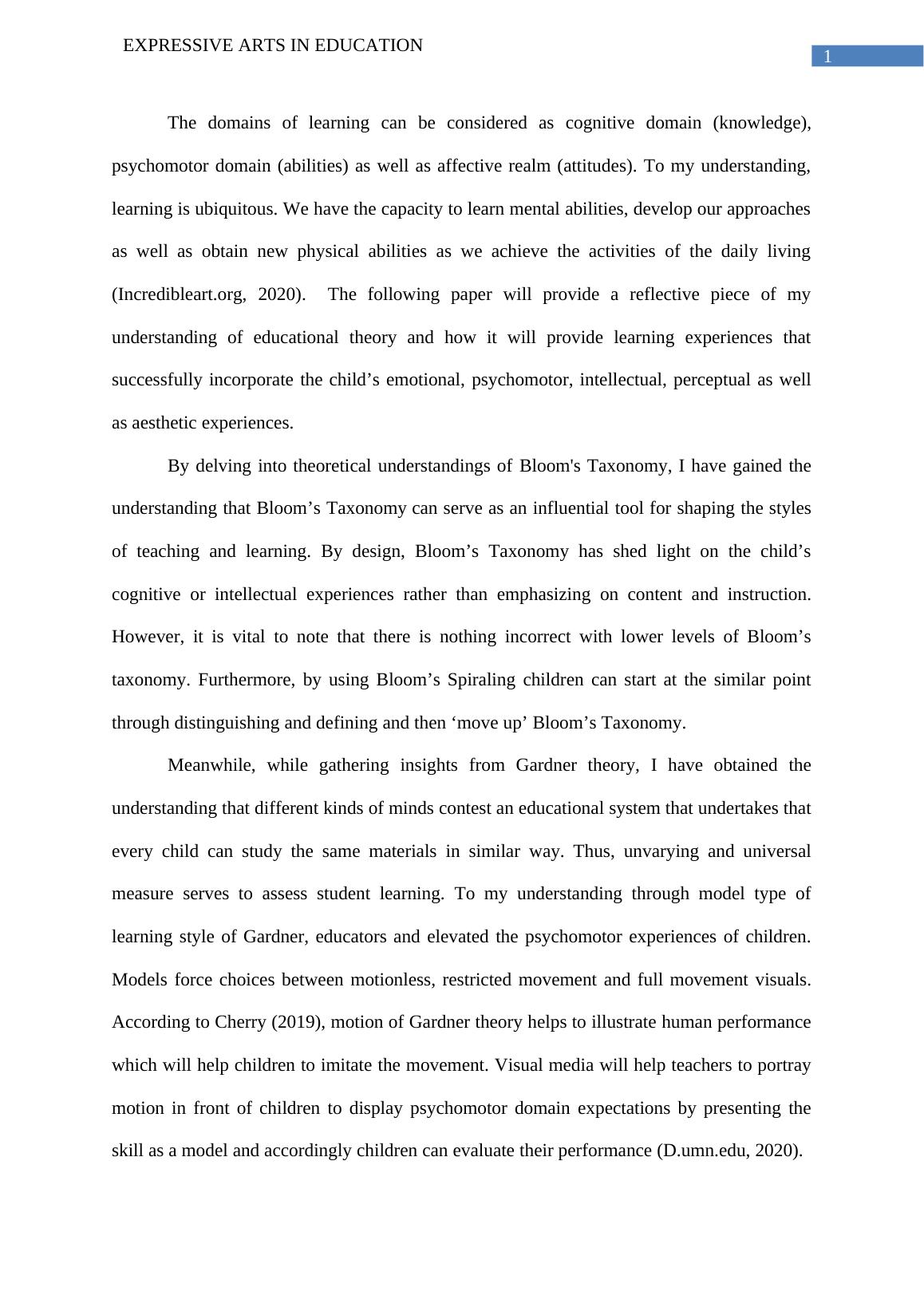Expressive Arts in Education- Child Emotions
Added on 2022-08-20
4 Pages744 Words20 Views
End of preview
Want to access all the pages? Upload your documents or become a member.
More than just play: Developing cognitive and physical skills in early childhood education - Desklib
|16
|3268
|440
Learning Theories in Health and Social Care
|10
|788
|230
Blooms Taxonomy and Areas of Knowledge in Health and Social Care
|14
|3635
|436
The Importance of Arts in Development of the Child
|4
|626
|288
Creative and Media Arts Pedagogies in Early Childhood Education
|8
|2604
|400
Importance of Creative Arts in Early Childhood Education
|8
|2202
|207


